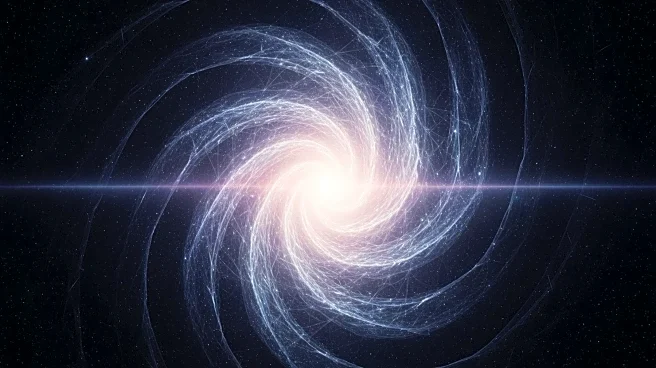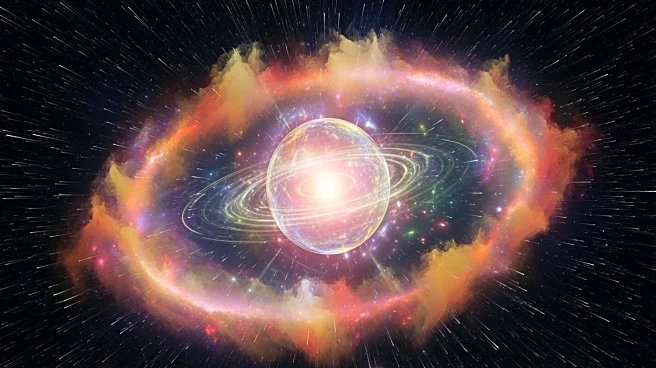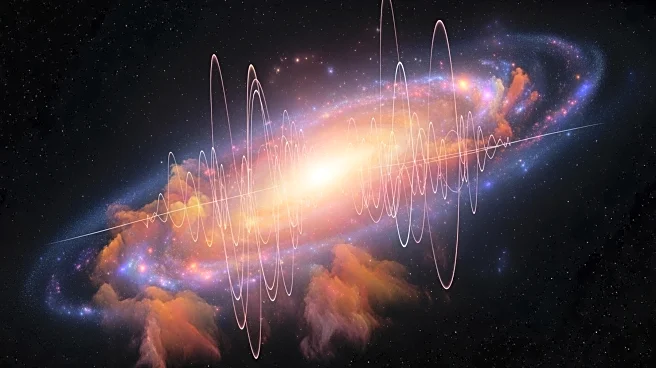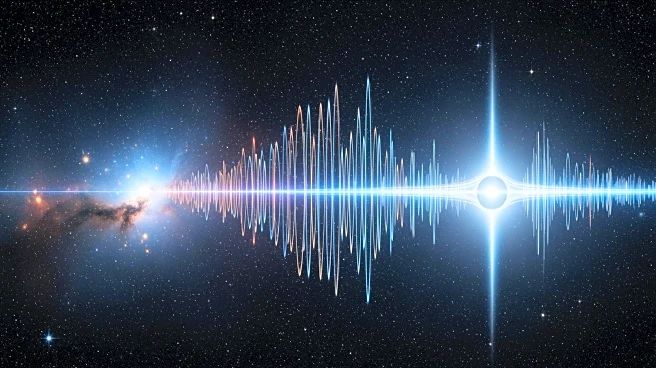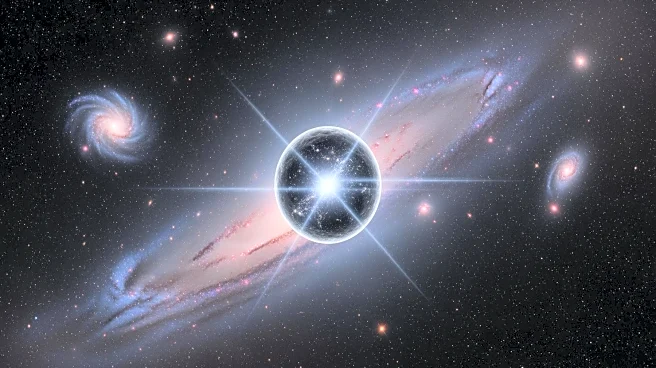What's Happening?
A new study published in Physical Review Research by scientists from Spain and Italy proposes a model that reimagines the early moments of the universe's formation. This model challenges the traditional
'inflation' theory, suggesting instead that gravitational waves, predicted by general relativity, may have been the driving force behind the universe's formation. The researchers link this idea to De Sitter space, a mathematical construct named after Dutch mathematician Willem De Sitter, who collaborated with Albert Einstein. The study suggests that gravity and quantum mechanics may be sufficient to explain the universe's structure.
Why It's Important?
This new model could revolutionize our understanding of the universe's origins by providing a simpler and potentially verifiable explanation for its formation. If gravitational waves are indeed the driving force, it could reshape theories about the early universe and the forces that shaped it. This research challenges long-standing ideas and could lead to new insights into the fundamental principles of physics, potentially impacting cosmology and our understanding of the universe's evolution. The study emphasizes the importance of re-evaluating established theories with new data and perspectives.
Beyond the Headlines
The concept of gravitational waves dates back to the early 20th century, with significant contributions from Albert Einstein. These waves, ripples in space-time, are produced by powerful cosmic events and were first detected in 2015. The study's approach highlights the potential of combining gravity and quantum mechanics to explain cosmic phenomena, offering a new lens through which to view the universe's history. This research underscores the ongoing quest to understand the universe's origins and the forces that govern its evolution, reflecting humanity's enduring curiosity about the cosmos.
